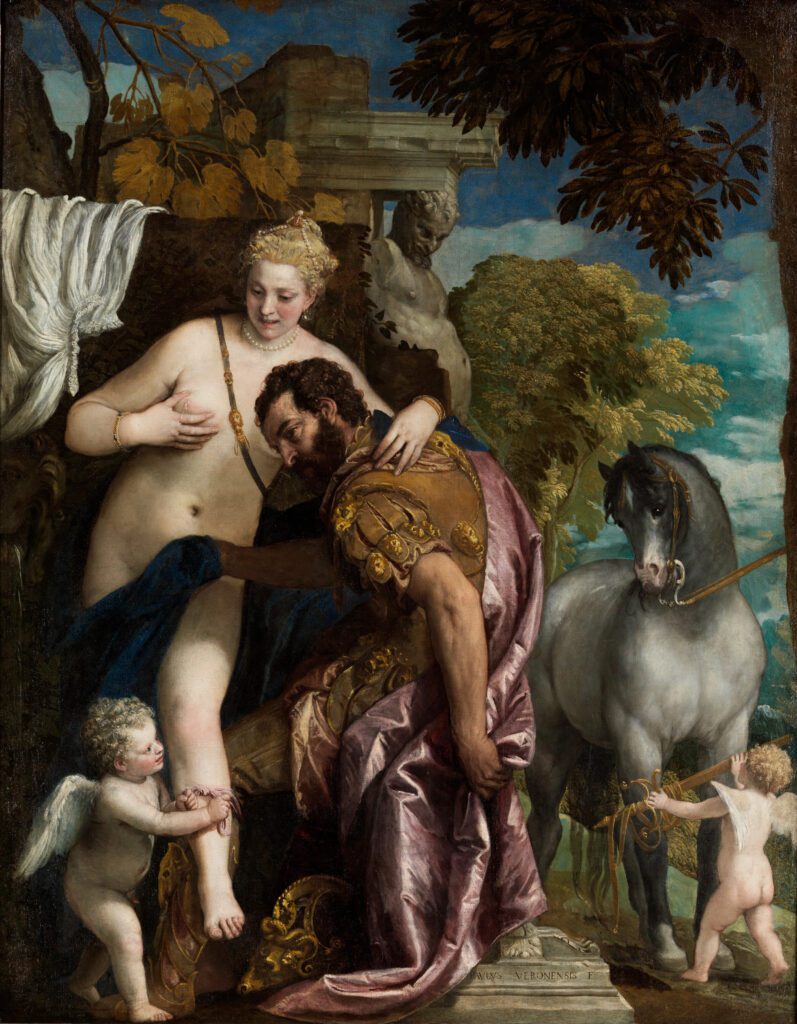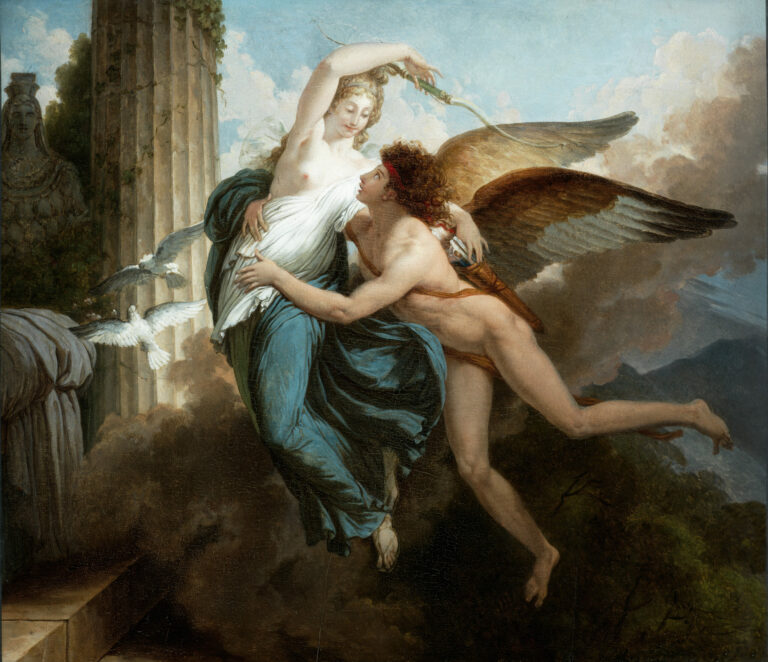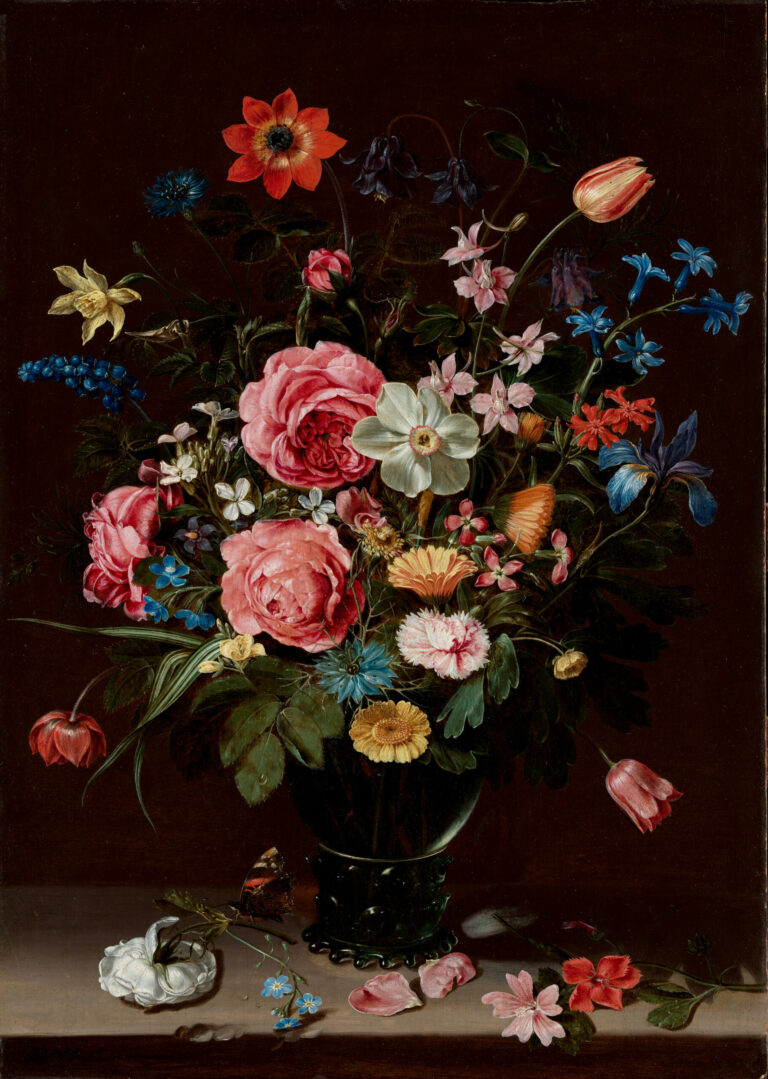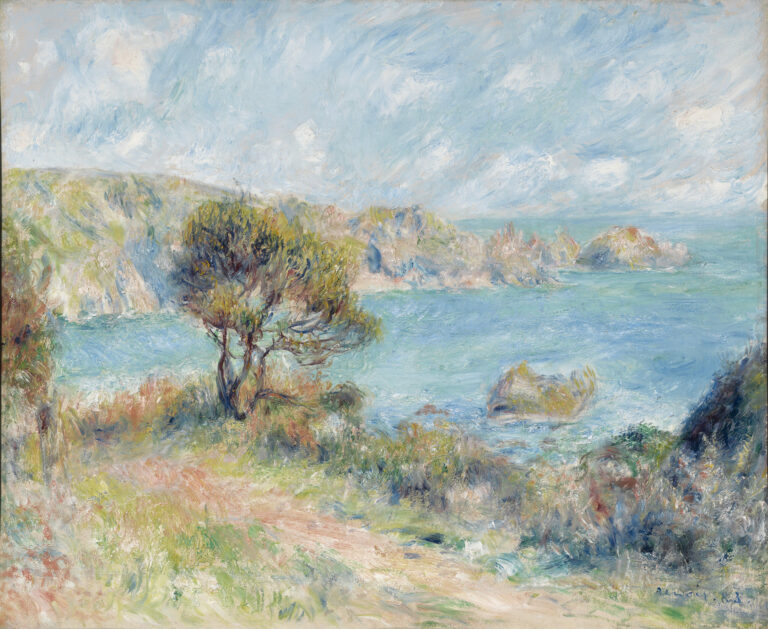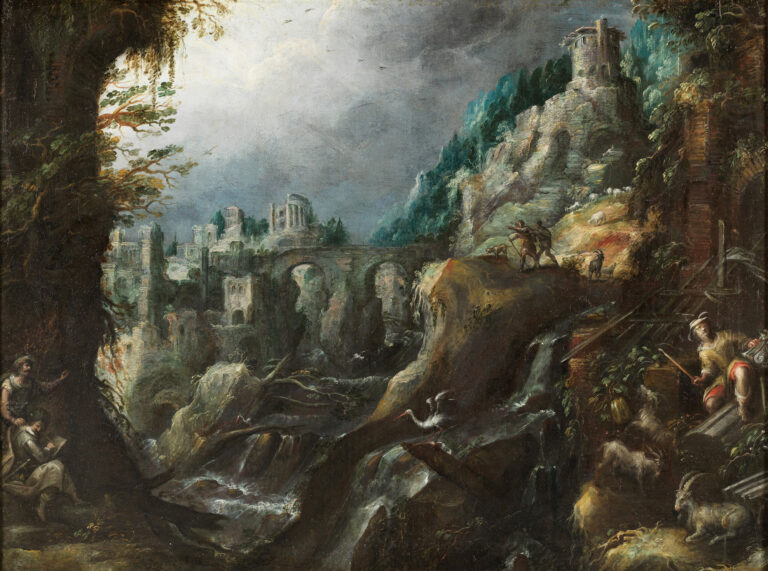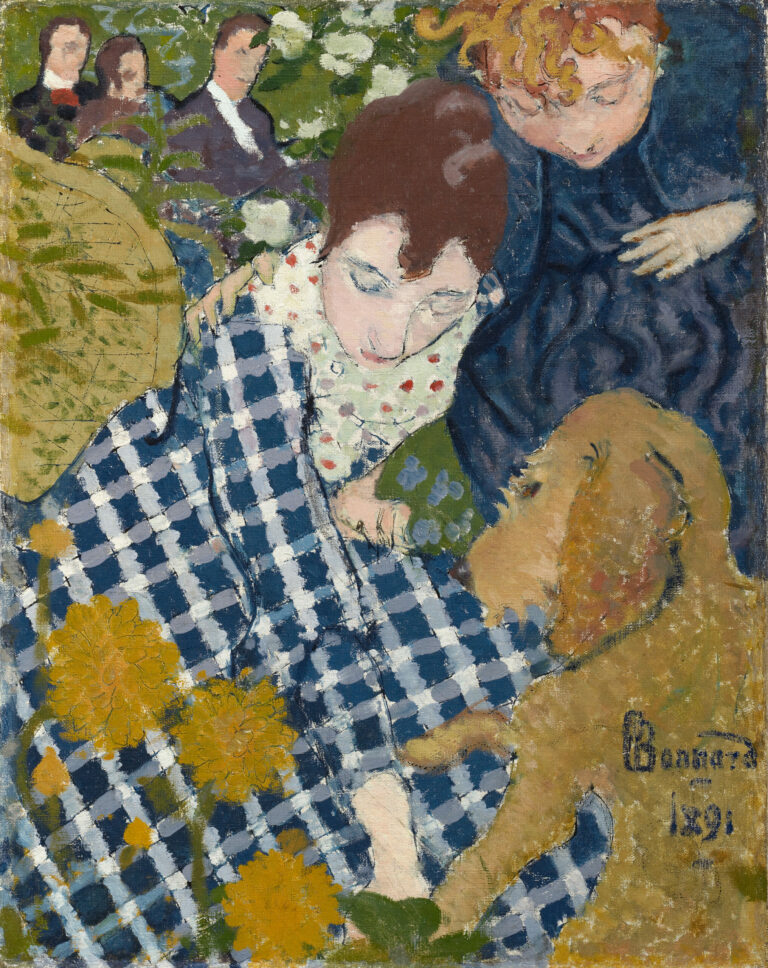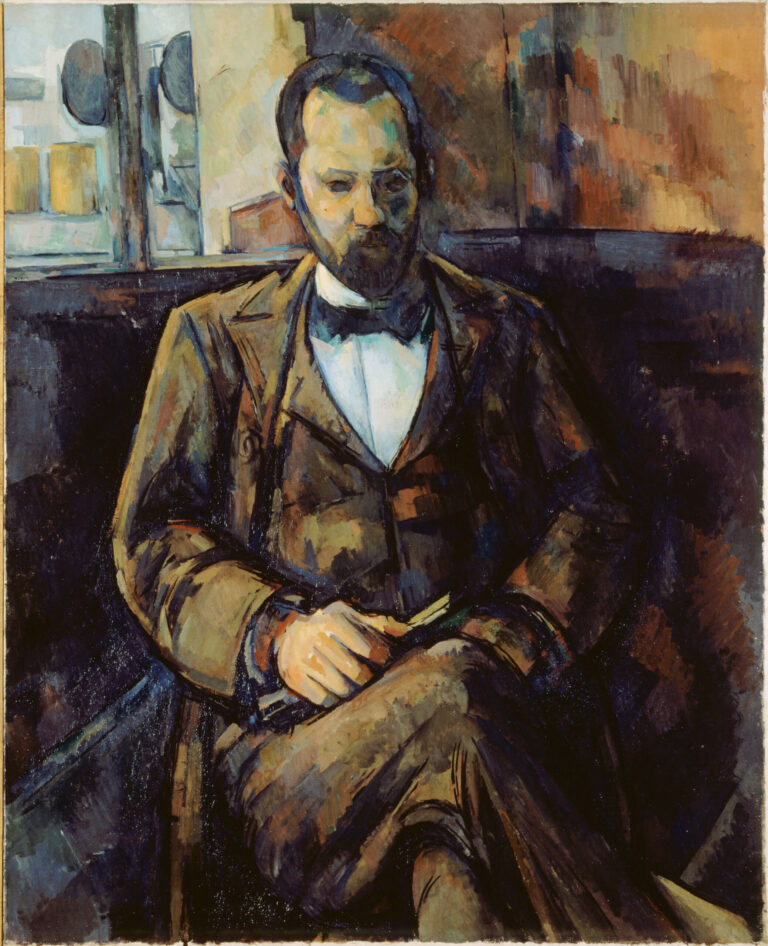Mars and Venus United by Love: Venetian Splendor. In this masterpiece, Veronese unfolds the magnificence of 16th-century Venetian art. The mythological scene presents Mars kneeling before Venus, while Cupid binds them with his powerful bonds.
The masterfully orchestrated composition plays with contrasts: the goddess’s milky complexion stands opposed to the warrior’s sun-bronzed skin, while Mars’s sumptuous rose-lilac drapery responds to the deep blue of Venus’s veil.
Veronese’s genius shines in his treatment of textures: pearlescent flesh, shimmering fabrics, and golden armor. The ancient architecture in ruins and the landscape with bluish tints create a theatrical setting for this allegory where beauty and tenderness triumph over violence, embodying the humanist ideals of the Venetian Renaissance.
Additional Information
- M
- ars and Venus United by Love, by Paolo Veronese, 1570
- Oil on canvas, 205.7 x 161 cm
The Metropolitan Museum of Art, Fifth Avenue, New York, Gallery 608 - https://www.metmuseum.org/art/collection/search/437891
Paolo Caliari, known as Veronese (1528-1588), was a major figure of the Venetian school alongside Titian and Tintoretto, establishing himself as a virtuoso of monumental decorative painting. Trained in Verona before settling in Venice, he developed a style characterized by chromatic opulence, mastery of perspective, and unparalleled elegance.
A master of large religious and mythological compositions, he excelled in staging sumptuously dressed figures within grandiose architectural settings. His luminous palette, bold foreshortening, and theatrical sense of space would have a lasting influence on European Baroque painting. This work, created at the height of his career, demonstrates his unique ability to merge sensuality and refinement, creating a visual narrative of incomparable richness that captivated the greatest collectors of his time.

